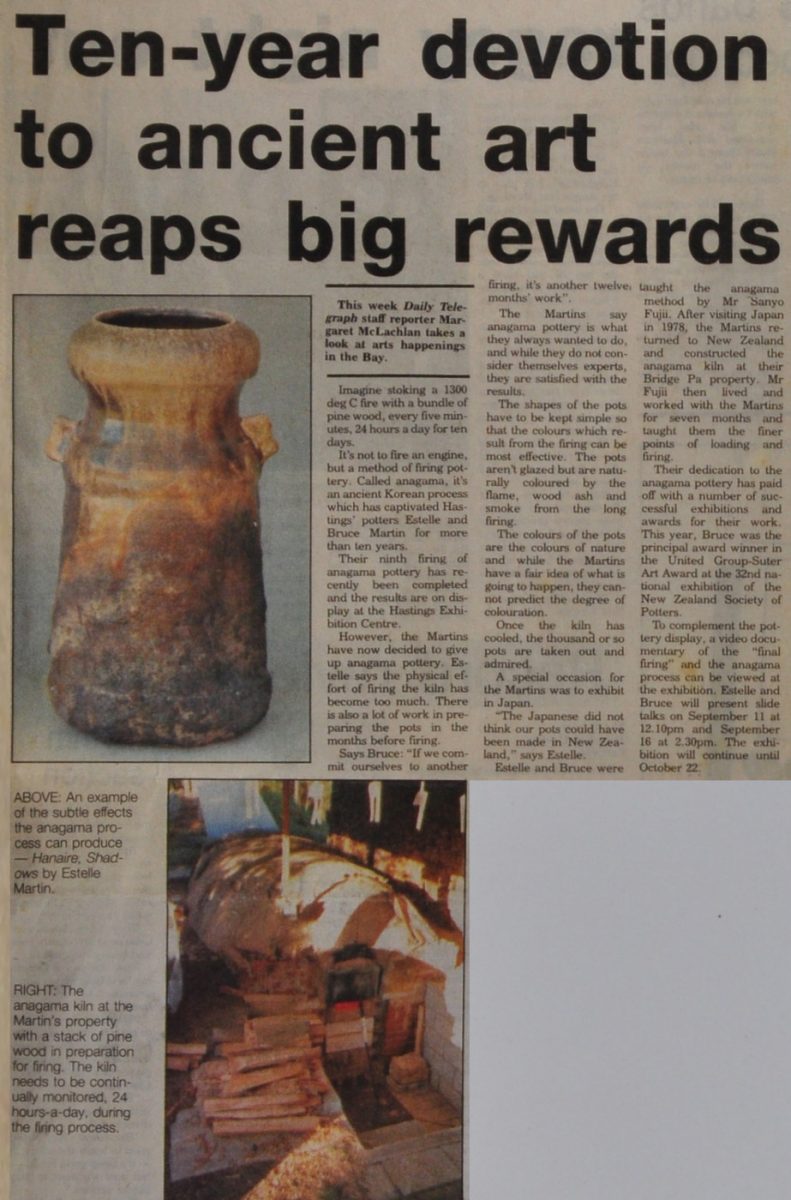Ten-year devotion to ancient art reaps big rewards
This week Daily Telegraph staff reporter Margaret McLachlan takes a look at arts happenings in the Bay.
Imagine stoking a 1300 deg C fire with a bundle of pine wood, every five minutes, 24 hours a day for ten days.
It’s not to fire an engine, but a method of firing pottery. Called anagama, it’s an ancient Korean process which has captivated Hastings’ potters Estelle and Bruce Martin for more than ten years.
Their ninth firing of anagama pottery has recently been completed and the results are on display at the Hastings Exhibition Centre.
However, the Martins have now decided to give up anagama pottery. Estelle says the physical effort of firing the kiln has become too much. There is also a lot of work in preparing the pots in the months before firing.
Says Bruce: “If we commit ourselves to another firing, it’s another twelve months’ work”.
The Martins say anagama pottery is what they always wanted to do, and while they do not consider themselves experts, they are satisfied with the results.
The shapes of the pots have to be kept simple so that the colours which result from the firing can be most effective. The pots aren’t glazed but are naturally coloured by the flame, wood ash and smoke from the long firing.
The colours of the pots are the colours of nature and while the Martins have a fair idea of what is going to happen, they cannot predict the degree of colouration.
Once the kiln has cooled, the thousand or so pots are taken out and admired.
A special occasion for the Martins was to exhibit in Japan.
“The Japanese did not think our pots could have been made in New Zealand,” says Estelle.
Estelle and Bruce were taught the anagama method by Mr Sanyo Fujii. After visiting Japan in 1978, the Martins returned to New Zealand and constructed the anagama kiln at their Bridge Pa property. Mr Fujii then lived and worked with the Martins for seven months and taught them the finer points of loading and firing.
Their dedication to the anagama pottery has paid off with a number of successful exhibitions and awards for their work. This year, Bruce was the principal award winner in the United Group-Suter Art Award at the 32nd national exhibition of the New Zealand Society of Potters.
To complement the pottery display, a video documentary of the “final firing” the anagama process can be viewed at the exhibition. Estelle and Bruce will present slide talks on September 11 at 12.10pm and September 16 at 2.30pm, The exhibition will continue until October 22.
Photo captions –
ABOVE: An example of the subtle effects the anagama process can produce – Hanaire, Shadows by Estelle Martin.
RIGHT: The anagama kiln at the Martin’s property with a stack of pine wood in preparation for firing. The kiln needs to be continually monitored, 24 hours-a-day, during the firing process.












Do you know something about this record?
Please note we cannot verify the accuracy of any information posted by the community.